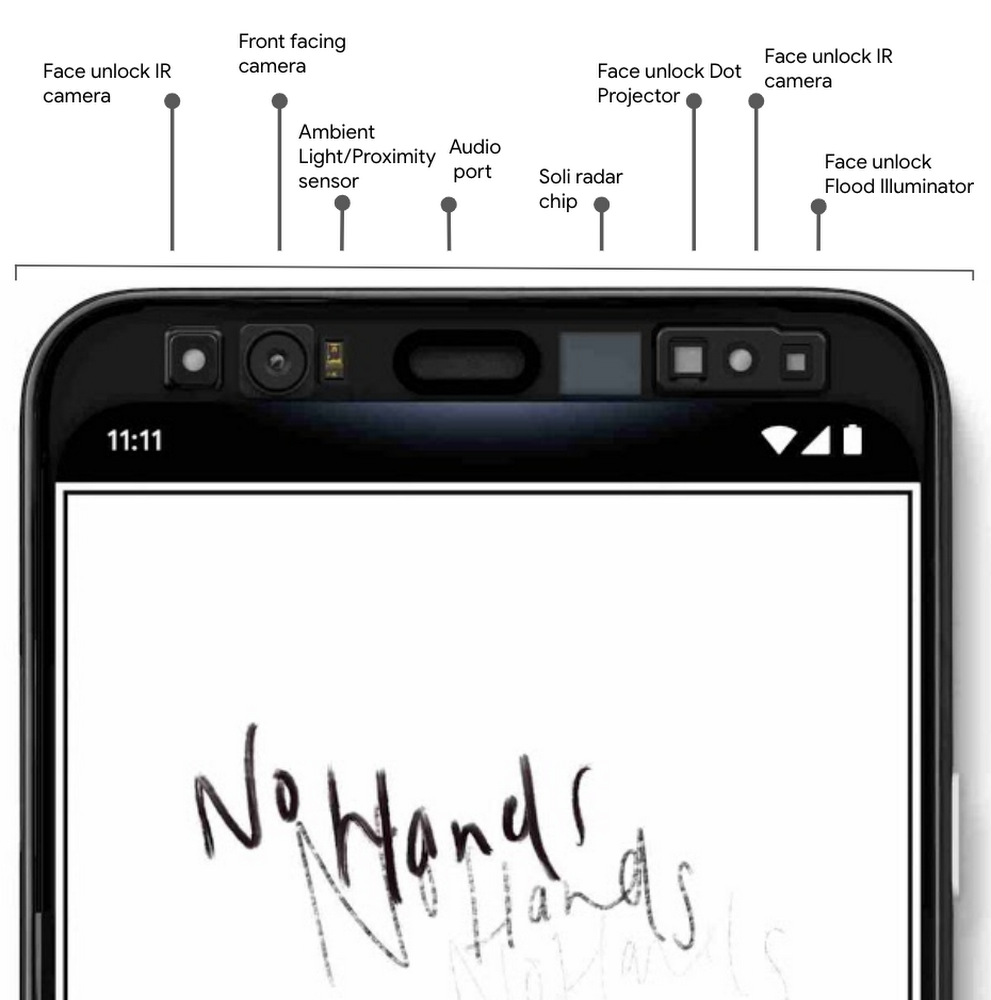Google was never able to keep Nexus and Pixel phones secret, if it even wanted to, and Pixel 4 is no exception. But unlike in previous years, Google has come forward with revealing teasers and a full Pixel 4 announcement several months before the October Pixel press conference. The search giant confirmed the Pixel 4’s rear camera design, as well as the front-facing 3D face recognition camera and Motion Sense features. The latter is something that’s not available on any other iPhone, a device that served as Google’s primary source of inspiration for all Pixel phones so far.
That’s because Motion Sense is actually the marketing moniker Google gave to its Project Soli system, which uses radar to detect motion and convert it into actions on a device. The Pixel 4 will have a Soli radar, which means you’ll be able to interact with the phone without touching it. If that sounds familiar, that’s because smartphone makers including LG and Huawei have their own ideas for touch-free smartphone interaction, although none of them uses radar. That said, some Motion Sense details have leaked ahead of Google’s October 15th media event straight from the Pixel 4 app.
Motion Sense will track your hand gestures only if the technology is approved to operate in your country. Google needs to obtain permission from local regulators to enable the Soli radar on Pixel 4, which means you might have to wait to get it.

According to 9to5Google’s findings, Motion Sense will be available in as many as 38 countries at launch. The data comes from the Motion Sense app installed on that Pixel 4 that was the subject of a recent review. Several major markets are part of the list, but there are a few notable absences, including Japan, Mexico, India, Australia, and New Zealand.
Here are, meanwhile, the 38 markets where Motion Sense will be available at launch: American Samoa, Austria, Belgium, Bulgaria, Canada, Croatia, Cyprus, Czechia, Denmark, Estonia, Finland, France, Germany, Greece, Guam, Hungary, Ireland, Italy, Latvia, Lithuania, Luxembourg, Malta, Netherlands, Norway, Poland, Portugal, Puerto Rico, Romania, Singapore, Slovakia, Slovenia, Spain, Sweden, Switzerland, Taiwan, United Kingdom, United States, Virgin Islands, U.S.
In addition to availability, 9to5Google discovered the apps that will support Motion Sense at launch. It turns out that plenty of third-party apps will recognize hand gestures, not just Google apps. The list includes Amazon Music, Deezer, Google Play Music, iHeartRadio, Spotify, Spotify Stations, YouTube Music, and YouTube.
It’s unclear whether other apps can also make use of the Soli chip if they’re not part of the list of supported apps inside the Motion Sense app. Also, it’s unclear what kind of gestures these apps will recognize. Supposedly, you’d be able to skip songs and maybe control volume without touching the phone.







